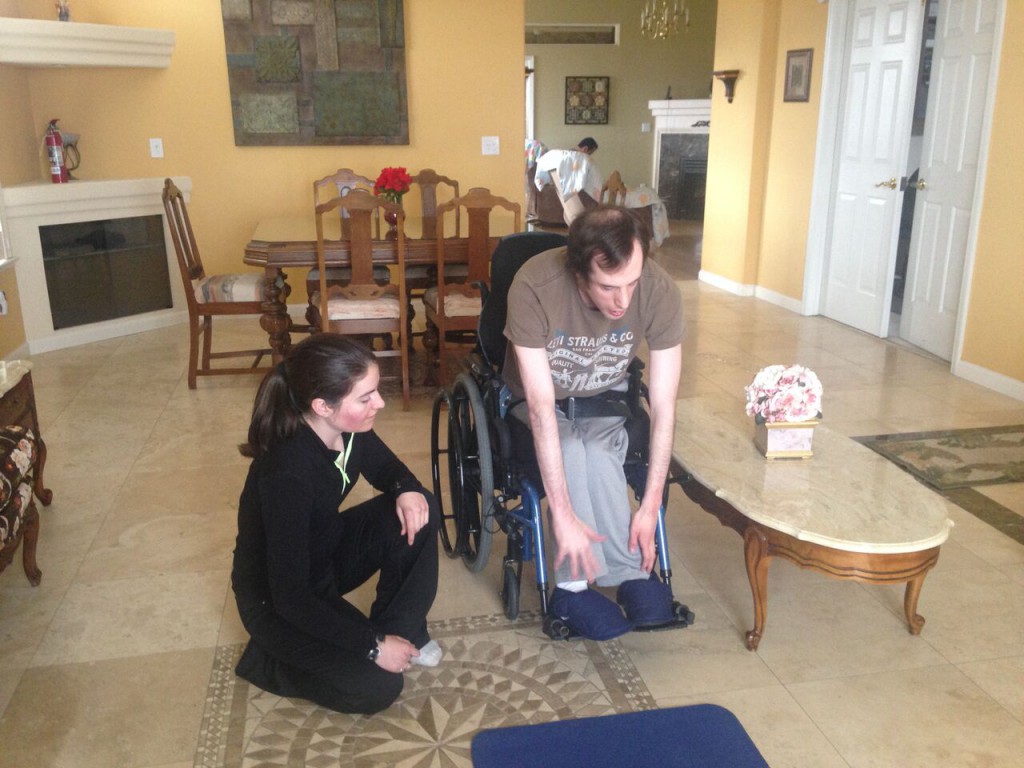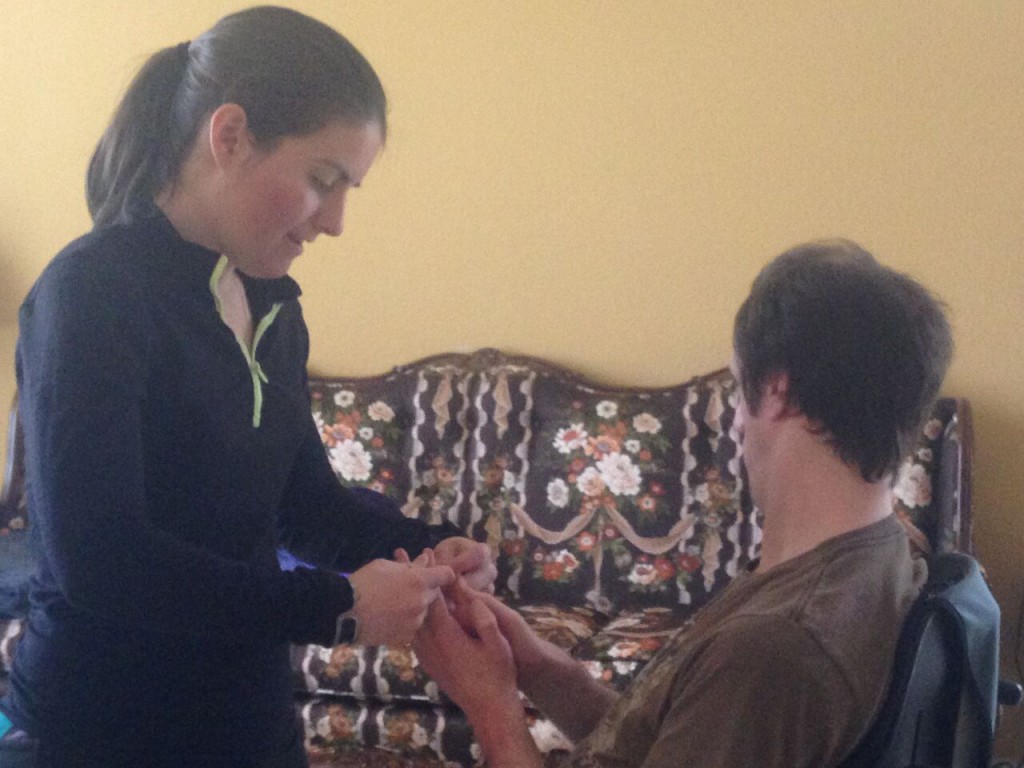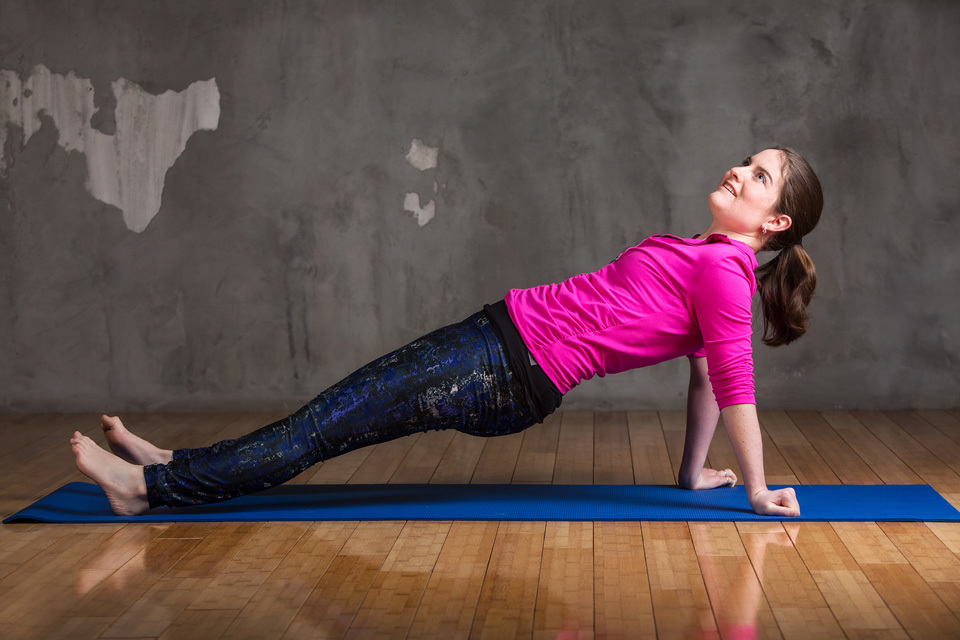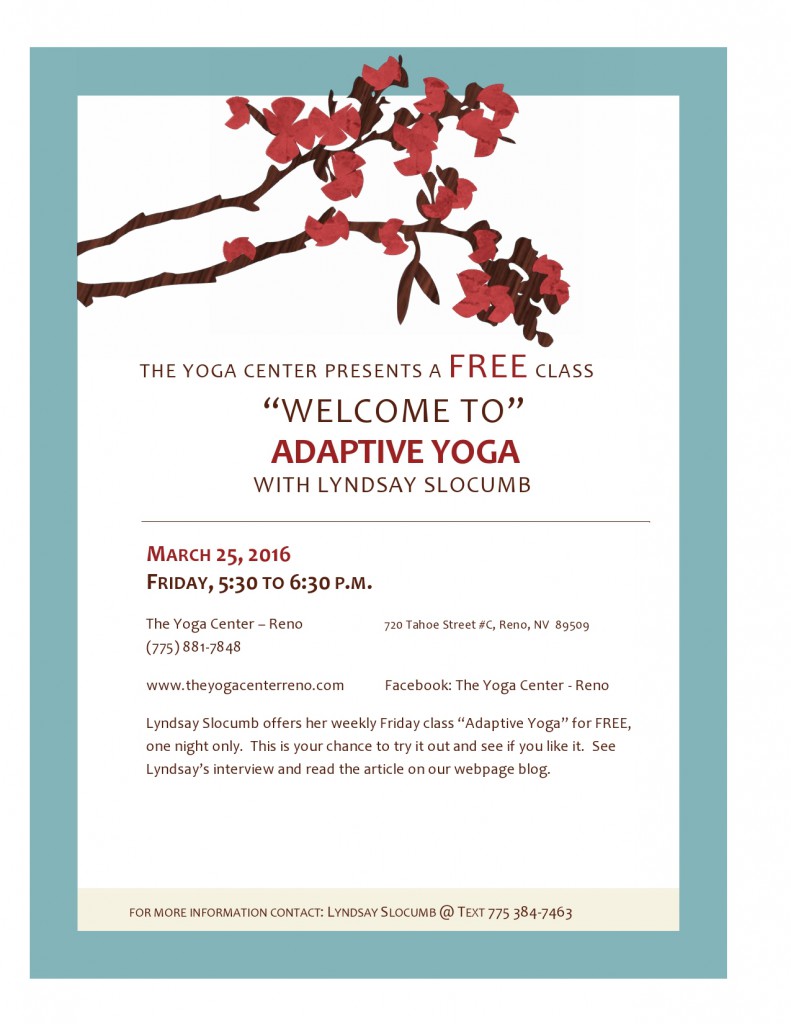“It’s not about what your body can do, it’s about what you can do in your body.” – Lyndsay Slocumb
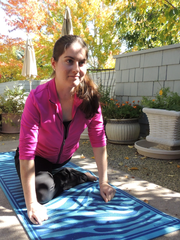
Lyndsay Slocumb, instructor of The Yoga Center’s Adaptive Yoga class, found her way to teaching, and to this class, through a life changing personal experience. Always a competitive athlete, Lyndsay was in a severe ski accident at age 14, one that left her learning to adapt to a new way of moving through the world. Lyndsay continues to compete and teaches others how to adapt and thrive as athletes themselves. Each month we will be highlighting a different teacher and their unique class, allowing you to find the class that fits needs you didn’t know could be met with yoga.
This month we feature Lyndsay’s Adaptive Yoga class. Adaptive Yoga is a class that allows each student to begin wherever they are at and move forward from there. “My class does not have a lot of up and down movement as I like to do the majority of the seated poses and then move up for all the standing poses. If there is any nerve/muscle discomfort, any or all poses can be done in a chair and we place another chair in front of the student to place their feet on, the chairs become the new floor. I offer many options in each stretch/pose so students can try one and if they don’t like it that day they can do a different pose to give them the same benefits as the pose the rest of the class is doing.” Lyndsay says “To adapt a yoga pose you start with whatever you can do. We break down a pose into different parts, work on the parts and once you become good at the parts we put the parts back together to do the pose.” Her class is heavy on the use of props, including straps, blocks, blankets, walls or chairs, all provided at The Yoga Center. “If you need to use the wall to help you balance during standing poses, then use the wall. If you are having trouble using the floor for arm balances, you can place a stack of blankets under your arms, or use a chair to bring your body to a more appropriate position to do the pose.”
March 11th marked the 9 year anniversary of Lyndsay’s skiing accident. At age 14 she crashed on a ski jump and was left with life threatening and life altering injuries including spinal cord injury, traumatic brain injury with so much swelling the doctors were unsure of viable brain use, collapsed lungs, massive internal bleeding, three broken ribs and vertebrae, and kidney damage. “I was in a coma for four weeks, ICU for two months, rehab for two months. I returned home in a wheelchair. Two months later I said goodbye to the wheelchair and was walking, not beautiful at all. I have been doing yoga ever since I was able to walk on my own. I was not able to get to the floor by myself when I started but slowly improved control of my body to where I walk almost normally (you might say it is normal) and gained confidence in myself off the mat in new situations that use to make me an unsettled mess.”
We asked Lyndsay a few questions –
Why did you decide to start teaching? I wanted to give back to the community that had given me so much during my time of figuring out what I was capable of doing. Teaching yoga allowed me to continue doing what I enjoyed (yoga) and a way for me to help others recover from whatever they are going through.
What has been the largest challenge practicing and teaching yoga? It is always a challenge to set time aside to have a yoga practice and consistently do your practice, we get so busy with everything else we try to do in one day. Being able to adapt the yoga practice to each student can be a challenge, for they all get different benefits from different poses. I enjoy hearing from my students what they would like to focus on and having open dialogue about different things as that helps me as the instructor guide them through their practice.
Lyndsay says “I have had quite the journey from where I started as not much more than a lifeless body on the hospital bed to where I am now as a certified yoga instructor (almost for 5 years now), a successful college student, competing in a new sport of wheelchair rugby, and still love to hit the slopes skiing. Much work was put in on my part to be where I am. It is the motivation we give ourselves to try new things and have fun along the way that take us through life. Without the dark tough times, the good sun shining times don’t mean as much. The little things in life should make you smile and be grateful for everything you have. Cherish every day!”
Lyndsay is a business major at University of Nevada, Reno, carrying a full schedule. She is a yoga instructor, teaching at The Yoga Center, at High Sierra Industries and in group homes. She is a champion of her own life.
See her Facebook Page- Lyndsay Slocumb Athlete
To read the story from Reno Gazette Journal click here:
http://on.rgj.com /1Mjnl9u
See her video interview with the High Fives Foundation, go to:
Be sure to catch the rerun of her TV episode on The Real Winning Edge this Saturday, March 12., 2016 at 12:00 p.m. on KAME, channel 21.
Mostly, come to her Adaptive Yoga class for FREE only one night – March 25th.

